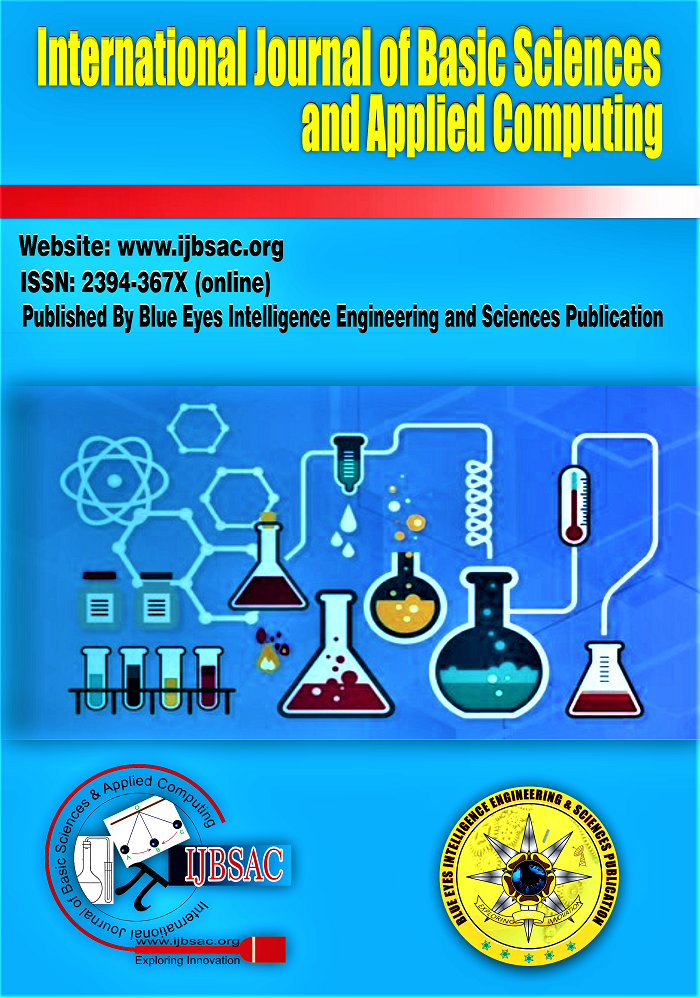Study and Verify the Performance Evaluation and Percentage Removal Efficiency of the Plant
Main Article Content
Abstract
Domestic, commercial, and industrial wastewater all belong to the category of urban wastewater. There are various treatment technologies available to treat the waste water from simple oxidation ponds to advanced MBBR systems. The present study is to verify the performance evaluation and percentage removal efficiency of the plant. The various water quality parameters like COD, BOD, TSS, TDS, Oil & Grease , Nitrates, pH, EC, DO, Turbidity and Phosphates of the waste water were being analyzed for the which were collected. Water samples were collected at different stages of treatment plant such as (raw water inlet, Aeration tank, Clarisettler and Treated water outlet) in the weekly basis for a period of 6 weeks before disposal into water body streams. After treatment, the average percentage removal efficiency for the parameters COD, BOD, TSS, TDS, Oil & Grease, and Phosphates was found to be 89%, 88%, 85%, 68%, 69% and 75%. After the analysis the result were finalized by comparing data with CPCB and IS standard values and ultimately, the performance and removal efficiency of the waste water treatment facility was found to be under good condition and the treated water are being used for flush-outs and gardening.
Downloads
Article Details
Section

This work is licensed under a Creative Commons Attribution-NonCommercial-NoDerivatives 4.0 International License.
How to Cite
References
D. Yadav, D. Rastogi,” Performance evaluation of Baija Taal Sewage treatment plant using Moving Bed Biofilm reactor at poolbhaag Gwalior,” ISSN: 2321-9653, Pg. No:92-97, 2021. https://doi.org/10.22214/ijraset.2021.32759
R. Subramanyam, “Performance evaluation of sewage treatment plant at Juet campus, Guna (MP), India -A Case Study,” IJAERS, ISSN: 2349-6495, Pg. No. 317-322, 2021. https://doi.org/10.22161/ijaers.710.36
S. Parashar, “Performance evaluation of sewage treatment plant using Moving bed biofilm reactor-Case Study,” SSRG-IAES, ISSN: 2394-2568 Pg. No:77-88, 2018. https://doi.org/10.14445/23942568/IJAES-V5I2P111
M. H. Hegazy, M. A. Gawad, “Measuring and evaluating the performance of a waste water treatment plant -Egypt, “CSEE, vol.16, 2016. https://doi.org/10.11159/awspt16.111
D. Sharma, Sharma Davinder, V. Singh, “Performance Assessment of 1.20MLD Sewage treatment plant,” ISSN: 2249-8958, Pg. No:3884-3887, 2020. https://doi.org/10.35940/ijeat.C6403.029320
CPCB, 1998. Status of Sewage Treatment in India, Central Pollution Control Board, New Delhi.
Maharathi, P. (2021). Treatment of Waste Water of Educational Institution and Estimating the Cost of the Wwtp. In International Journal of Innovative Technology and Exploring Engineering (Vol. 10, Issue 4, pp. 126–128). https://doi.org/10.35940/ijitee.d8525.0210421
Kumar, S., & Choudhary, M. P. (2020). Performance Assessment of Domestic Wastewater Treatment Plants Operating on Different Technologies. In International Journal of Engineering and Advanced Technology (Vol. 9, Issue 3, pp. 1649–1653). https://doi.org/10.35940/ijeat.c5454.029320
Dewalkar, S. V., & Shastri, S. S. (2020). Provision of Staged Onsite Wastewater Treatment Units at Environmental Floors of Multi-storeyed Building with Hydraulic and Structural Feasibility. In International Journal of Recent Technology and Engineering (IJRTE) (Vol. 8, Issue 5, pp. 4488–4493). https://doi.org/10.35940/ijrte.e6741.018520
Vishnoi, Dr. A., & Dwivedi, A. (2022). Challenges of Plastic Waste and It’s Recycling, A Threat to Environment: A Case Study of Kanpur City. In Indian Journal of Social Science and Literature (Vol. 1, Issue 4, pp. 1–5). (LSP). https://doi.org/10.54105/ijssl.c1011.061422





